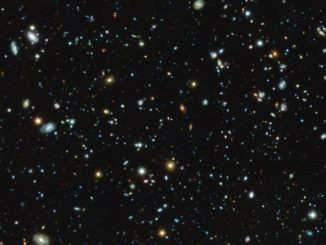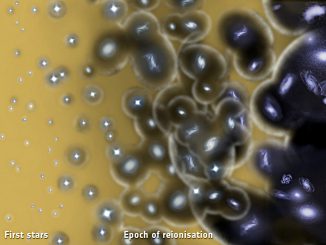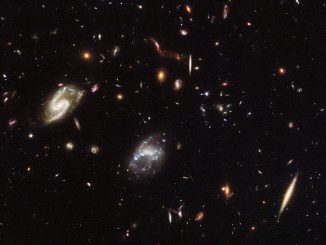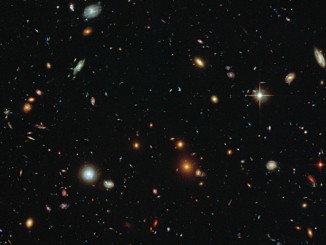
Hubble Ultra-Deep Field



ALMA uncovers insights into “Golden Age” of galaxy formation
International teams of astronomers have used the Atacama Large Millimeter/submillimeter Array (ALMA) to explore the distant corner of the universe first revealed in the iconic images of the Hubble Ultra Deep Field (HUDF). These new ALMA observations are significantly deeper and sharper than previous surveys at millimetre wavelengths.

First stars formed even later than previously thought
ESA’s Planck satellite has revealed that the first stars in the universe started forming later than previous observations of the Cosmic Microwave Background indicated. This new analysis also shows that these stars were the only sources needed to account for reionising atoms in the cosmos, having completed half of this process when the universe had reached an age of 700 million years.

Hubble’s vibrant view of a massive galactic gathering
This incredible image from the NASA/ESA Hubble Space Telescope reveals thousands of colourful galaxies in the constellation of Leo, components of cluster known as MACS J1149.5+2223. This vibrant view of the early universe was captured as part of the Frontier Fields campaign, which aims to investigate galaxy clusters in more detail than ever before.

Hubble dares to look into Pandora’s Box
Peering deep into the early universe, this picturesque parallel field observation from the NASA/ESA Hubble Space Telescope reveals thousands of colourful galaxies swimming in the inky blackness of space in the constellation Sculptor. This spectacular skyscape was captured during the study of the giant galaxy cluster Abell 2744, otherwise known as Pandora’s Box.
